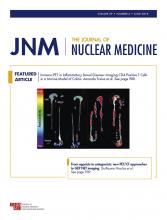Article Figures & Data
Tables
Pharmaceutical U.S. Pharmacopeia purity requirements Acetaminophen (325-mg tablet) Acetaminophen contains no less than 98.0% and no more than 101.0% C8H9NO2, calculated on an anhydrous basis, of which no more than 0.014% can be as chloride, 0.02% as sulfate, 0.001% as heavy metals, 0.005% as p-aminophenol, and 0.001% as p-chloroacetanilide. Therefore, there can be up to 6.5 mg of unknowns in a 325-mg tablet, of which 3.25 μg may be heavy metals. Acetylsalicylic acid (aspirin, 325-mg tablet) Aspirin contains no less than 99.5% and no more than 100.5% C9H8O4, calculated on a dried basis, of which no more than 0.014% can be as chloride, 0.04% as sulfate, 0.1% as free salicylic acid, and 10 μg as heavy metals per gram of aspirin. Therefore, there can be up to 1.6 mg of unknowns in a 325-mg tablet, of which 3.25 μg may be heavy metals. Atenolol (50-mg tablet) Atenolol contains no less than 98.0% and no more than 102.0% C14H22N2O3, calculated on a dried basis. No more than 0.25% of any individual chromatographic impurity is found, and the sum of all chromatographic impurities is no more than 0.5%. Therefore, there can be up to 0.25 mg of unknown chromatographic impurity per 50-mg tablet, and there can be up to 0.75 mg of nonchromatographic impurity. Ascorbic acid (vitamin C, 500-mg tablet) Ascorbic acid contains no less than 99.0% and no more than 100.5% C6H8O6, with no more than 0.002% heavy metals, or up to 10 μg per 500-mg tablet. Rolaids (Chattem, Inc.) (CaCO3, 675 mg, and Mg(OH)2, 135 mg, in one tablet) CaCO3 contains no less than 98.0% and no more than 100.5% CaCO3. Heavy metal limit is 0.002%, or 13.5 μg/tablet; lead limit is 3 ppm (2 μg/tablet); arsenic limit is 3 ppm (2 μg/tablet); and mercury limit is 0.5 μg/g (0.33 μg/tablet). Mg(OH)2 contains no less than 95.0% and no more than 100.5% Mg(OH)2. Heavy metal limit is 20 μg/g, or 2.7 μg/tablet, but lead is no more than 0.202 μg/tablet. Ibuprofen (200-mg tablet) Ibuprofen contains no less than 97.0% and no more than 103.0% C13H18O2, calculated on an anhydrous basis. Heavy metal limit is 0.002%, or 4 μg/tablet. Diagnostic radiopharmaceutical Mass* 15O-H2O, 1,110 MBq (30 mCi) 5.55 pg 18F-NaF, 370 MBq (10 mCi) 0.24 ng 18F-FDG, 370 MBq (10 mCi) 1.06 ng 13N-NH3, 370 MBq (10 mCi) 400–800 ng 18F-florbetapir, 370 MBq (10 mCi) About 300 ng 99mTc-TcO4, 370 MBq (10 mCi) 3.56 ng + variable 99Tc-TcO4 99mTc-MDP, 370–740 MBq (10–20 mCi), assumes 5 doses per kit 2 mg of medronate disodium 99mTc-MAG3, 185–370 MBq (5–10 mCi), assumes 5 doses per kit 0.2 mg of betiatide 99mTc-sestamibi, 740 MBq (20 mCi), assumes 5 doses per kit 0.2 mg of 2-methoxy isobutyl isonitrile 99mTc-MAA, 148 MBq (4 mCi), assumes 10 doses per kit ∼0.1 mg of aggregated albumin 99mTc-exametazime, 740 MBq (20 mCi), assumes 1 dose per kit 0.5 mg of exametazine 99mTc-sulfur colloid, 185 MBq (5 mCi), assumes 10 doses per kit 0.19 mg of sodium thiosulfate and 0.53 mg of gelatin 99mTc-DTPA, 370 MBq (10 mCi), assumes 10 doses per kit 0.5 mg of pentasodium pentetate 99mTc-disofenin, 185 MBq (5 mCi), assumes 10 doses per kit 2.0 mg of disofenin 99mTc-DMSA, 185 MBq (5 mCi), assumes 5 doses per kit 0.24 mg of succimer 111In-DTPA, 18.5 MBq (500 μCi) 10–25 μg of pentetic acid 201Tl-chloride, 111 MBq (3 mCi) 16.6 ng of 201Tl 123I-NaI, 14.8 MBq (400 μCi) 0.246 ng 123I-hippuran, 37 MBq (1 mCi) 2 mg of iodohippurate sodium ↵* Compounds added for isotonicity, pH adjustment, stabilization, reduction, and preservation are not included because they are already judged safe.
Variations are due to variable carrier concentrations, frequency of generator milking, time elapsed since radiopharmaceutical preparation, and number of doses prepared per kit.







